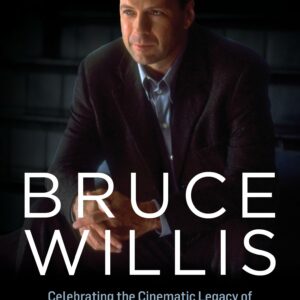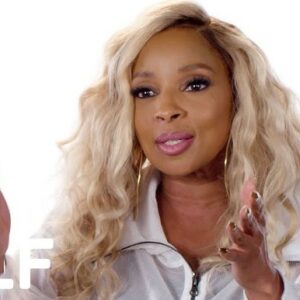Introduction
Alecia Beth Moore, known to the world as Pink, has become an iconic figure in the music industry not just for her unique voice and dynamic stage presence but for her ability to blend musical elements in ways that create emotional and sonic depth. From her rebellious early days in the industry to her later, more introspective work, Pink has always evolved as an artist, staying relevant while maintaining her distinct identity.
One of the most notable techniques Pink has employed over the years is her use of backing vocals and choirs. These are not merely background elements but significant aspects of her music that elevate her sound, providing both emotional intensity and a richer auditory experience. As Pink transitioned from pop-punk anthems to emotionally charged ballads and larger-than-life performances, backing vocals and choirs have remained a cornerstone in her creative process.
This article delves into Pink’s innovative use of backing vocals and choirs, exploring how these elements add depth to her songs, enhance her live performances, and embody her creative vision.
The Role of Backing Vocals in Pink’s Music
Pink has a knack for creating multi-layered soundscapes that feel intimate yet grand, raw yet polished. Much of this can be attributed to her strategic use of backing vocals, which act as an extension of her own voice, amplifying her emotional delivery and adding layers of texture to her tracks. Whether in the studio or live performances, backing vocals are essential in producing a fuller, more resonant sound that complements her lead vocals without overshadowing them.
In songs like “Just Give Me a Reason,” a collaboration with Nate Ruess from the band Fun, Pink’s use of harmonizing backing vocals stands out. In this ballad, her vocals often intertwine with Ruess’s, and the backing vocals underscore the emotional tension and vulnerability expressed in the lyrics. The harmonies emphasize the push-and-pull between the two characters in the song, creating a richer narrative experience for the listener. The song is a prime example of how Pink doesn’t just rely on her own vocal prowess; she crafts an entire vocal ensemble, even in her solo performances.
Another example of Pink’s mastery with backing vocals is found in the anthemic track “Try.” The backing vocals in this song mirror the song’s message of resilience and determination. As Pink sings about enduring hardships and pushing forward, the backing vocals swell during the chorus, creating a sense of collective strength. The effect is powerful—Pink’s voice is at the forefront, but the layers of vocals behind her reinforce the song’s emotional gravity.
In other tracks, like “Who Knew,” the backing vocals are more subdued but still play a crucial role in building the song’s emotional arc. As the song progresses, the backing vocals subtly intensify, creating a crescendo that mirrors the swelling emotional impact of the lyrics. Here, Pink uses backing vocals not just as a technical element but as a storytelling tool, guiding the listener through the highs and lows of the song’s narrative.
The Emotional Impact of Choirs
While backing vocals are integral to Pink’s music, the use of choirs elevates her sound to another dimension, particularly in live performances and some of her more grandiose studio recordings. Choirs bring a sense of grandeur and communal emotion, transforming a song from a personal statement into something universal.
One of the most striking examples of choir use in Pink’s work is her song “What About Us.” In both the recorded version and live performances, the inclusion of a choir adds a layer of emotional depth that underscores the song’s themes of disenfranchisement and longing for connection. The choir’s voices rise and fall in unison, giving the song a sense of collective pleading that mirrors the social and political commentary embedded in the lyrics. When performed live, the presence of a choir amplifies the emotional weight of the song, turning it into a stirring anthem for those feeling lost or unheard.
In live performances, Pink has also used choirs to great effect in her rendition of “Perfect,” a song that has become an anthem of self-acceptance and resilience. The addition of a choir to the live version of this song transforms it into an even more powerful statement. The harmonized voices lend the song a soaring, uplifting quality, making the message of self-worth resonate with even greater impact. The choir’s presence turns what might have been a deeply personal, individual experience into a communal catharsis, as the audience feels the power of collective affirmation.
The emotional impact of choirs is also evident in Pink’s track “I Am Here.” The song, which carries a strong sense of empowerment and spiritual awakening, reaches its emotional peak when the choir comes in. The choir gives the song a gospel-like quality, reinforcing the themes of hope and survival. As Pink sings, “I am here, I’ve already seen the bottom, so there’s nothing to fear,” the choir’s harmonies lift the song to a spiritual plane, making it feel like a rallying cry for strength and perseverance.
Enhancement of Live Performances
Pink’s live performances are legendary, not just for her acrobatic feats and high-energy stage presence but for the way she recreates the depth and richness of her studio recordings. Backing vocals and choirs play a pivotal role in this, allowing her to replicate—and often surpass—the studio sound in a live setting.
One of the challenges many artists face in live performances is the inability to match the complexity and production quality of their recorded tracks. Pink, however, overcomes this by incorporating live backing vocalists and, in some instances, full choirs. This approach not only ensures that her live performances retain the same emotional and sonic depth as her studio work but also enhances the overall experience for the audience.
During her live rendition of “What About Us,” for instance, the inclusion of a choir adds a dramatic flair that elevates the performance to something akin to a theatrical production. The choir’s harmonies build and expand the song’s emotional core, turning a pop song into a moment of collective emotional release. Similarly, in her performances of “Just Like a Pill,” backing vocalists help to build the tension and release in the song, creating a dynamic interplay between Pink’s lead vocals and the harmonized layers behind her.
Incorporating backing vocals and choirs also allows Pink to experiment with vocal arrangements in her live shows, often adding improvised vocal runs or harmonies that weren’t present in the studio version. This creative freedom is one of the reasons Pink’s live performances are so exhilarating—each show feels unique, with the backing vocals and choirs contributing to a fuller, more immersive sound.
Pink’s Creative Vision and Collaboration
Pink’s use of backing vocals and choirs is not just a technical choice; it’s a reflection of her broader creative vision. As an artist who is deeply involved in the production and arrangement of her music, Pink approaches vocal arrangements with the same care and precision as any other element of her sound. Her collaboration with vocal arrangers, choir directors, and backing vocalists is a crucial part of her creative process.
In interviews, Pink has spoken about how she views her music as a collaborative effort, with each person involved bringing their own expertise to the table. When it comes to vocals, this means working closely with her backing vocalists and choir directors to ensure that each harmony, each note, serves the emotional core of the song. Whether in the studio or on tour, Pink is known for her meticulous attention to detail, often spending hours perfecting vocal arrangements to achieve the exact sound she envisions.
Pink’s creative vision also extends to her live shows, where the integration of backing vocals and choirs is carefully planned to enhance the overall performance. From the placement of the vocalists on stage to the specific moments when the choir should come in, Pink’s attention to detail ensures that every element of the performance works in harmony to create a powerful, cohesive experience for the audience.
Conclusion
Pink’s use of backing vocals and choirs is a testament to her versatility as an artist and her commitment to pushing the boundaries of pop music. By incorporating these elements, she adds layers of emotional and sonic depth to her music, creating a sound that is both intimate and grand, personal and universal. Whether in the studio or on stage, backing vocals and choirs are an integral part of Pink’s distinctive sound, contributing to her status as one of the most innovative and dynamic artists in the industry today.
In a world where pop music can often feel formulaic, Pink continues to defy expectations, using every tool at her disposal to create music that resonates on a deeper level. Backing vocals and choirs are just one of the many ways Pink sets herself apart, proving that she is not just a pop star, but a true artist with a vision that extends far beyond the confines of genre or convention.





